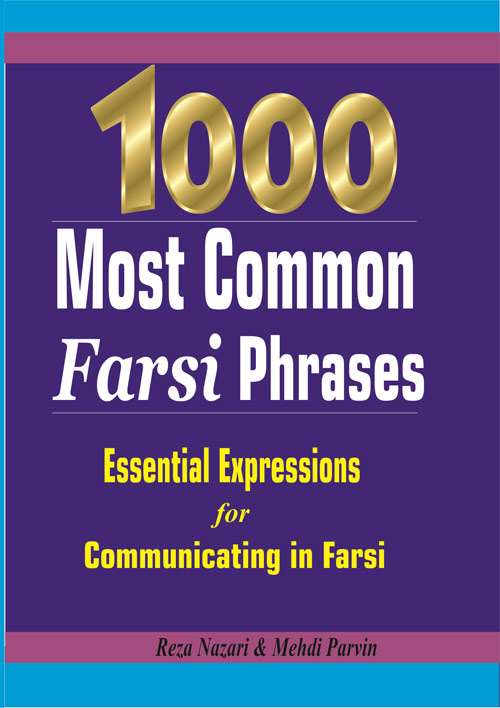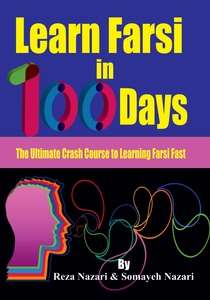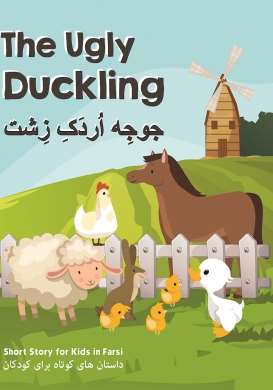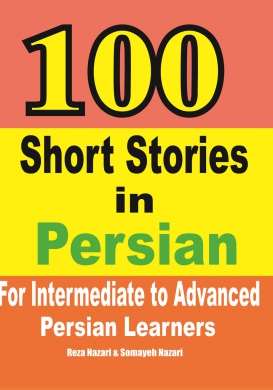
Surely a substantive number of you will be wondering, how hard is the Persian language to learn?
The basic answer is that, it depends on you and your point of view.
- Vocabulary – Persian forms vocabulary in a logical manner and once you get the hang of it you can quickly build new words. There are several loan words from English to use, but if you have a background in French or Arabic you will truly have an advantage with learning Persian vocabulary.
- Grammar – Persian grammar is usually subject-object-verb and this combined with a noun case system can take some time to overcome. The suffix on Persian verbs denoting subject and tense is also a bit tricky.
- Speaking/Listening – the Persian language is tonal and the use of stress is straightforward. The sounds are not too difficult for native English speakers and its intonations are almost like English.
- Writing/Reading – The system of reading and writing Persian is right to left and there are some 32 letters in the alphabet. You need to practice constantly to feel comfortable with this type of.
Best Farsi Learning Resource!
So, how hard is Persian (Farsi) to learn really?
Vocabulary

Persian language vocabulary is formed through either derivation or compounding of existing nouns, verbs, and adjectives. This is the example of the base verbal stem of “dān” which means to know.
- Scientist – دانشمند – dān esh mand
- University – دانشگاه – dān esh gāh
- Ignorance – نادانی – nā dān i
You can form countless different related Persian vocabulary in this way.
The Persian language has taken loans words from several key languages including Arabic, French and Turkic languages. In more recent years English language loan words have become more and more popular too.
There are a lot of English loan words across a wide-ranging number of vocabulary topics.
Basic English Loan Words
- Barcode – bārkod
- T-shirt – tishert
- Irish coffee – āyrish-kofi
- Cheeseburger – chiz-berger
- Computer -kāmpyuter
- Silicon – silikān
- Cool – kul
Grammar

- The apple is green — seeb sabz e — e particle is used to denote the adjective which describes the noun
- It is Mike’s apple — enn seeb-e Mike-e — the particle e is used to denote possession also subject-object-verb word order, but not fixed, can also be subject-verb-object
- I give Mike the apple — man be Mike seeb midam — be particle to denote an indirect object, also am suffix on the verb denotes present tense and I subject
- I give him the apple — man be oo seeb midam — mi particle on the verb denotes we subject
- He gives it to Mike — oo aan raa be Mike mide — word order is subject-direct object-indirect object-verb, raa particle to denote a direct object
- He doesn’t give it to Mike — oo aan raa be Mike nemide — ne prefix to show negative
- Mike gives it to him — Mike aan raa be oo mide — he and she subject and verb-subject prefix are the same
- I gave Mike the apple — man be Mike seeb daadam — change of verb form to denote past action
- We must give it to him — maa baayad aan raa be oo bedim — auxiliary verb and main verb split, also the main verb form subjunctive form
- I want to give it to him — man mikhaaham aan raa be oo bedam — the verb for want functions similar to must form above
The language deconstruction method is by no means exhaustive, but it is a good base for understanding the Persian language. It operates under the 80:20 Pareto principle, in that 80 percent of your language needs are covered by 20 percent of the functional language.
Key Features
- Word Order – Persian grammar has a subject-verb-object word order.
- Articles – In Persian, you can either place the word “yek” before a noun or the sound “i” after to make the noun indefinite. If you do neither then that noun is definite.
- Pronouns – The subject pronouns are explained in the suffix of the verb and are therefore not essential.
- Pronouns – The subject pronouns are explained in the suffix of the verb and are therefore not essential.
- Nouns – Farsi Nouns are made plural by adding the a suffix of “ha or aan” but the complications with nouns come when taking about the cases. The case shows the listener the function of a noun in sentences. There are 5 cases in Farsi, Nominative (subject), accusative (directly affected by the subject), dative (receive an action), locative (where) and ablative (from where). These cases can be spoken and written before or after the noun.
- Adjectives – the adjective comes after the noun and usually has the particle “e” between.
- Verbs – Farsi verbs change depending on subject and tense. So a base verb such as, to see – didan. To make this verb the continuous past for example with “I” as the subject, Then we change the form to mididam which has the prefix “mi” and the suffix “dam”. “Dam” is the pronoun for past tense subject “I”, combined with the prefix “mi” and we get the continuous past.
- Auxiliary verbs – are split up in the word order of the sentence and change the form of the main verb to subjunctive.
- Be – The “be” verb is “hast” in the present tense and “bud” for the past. The Persian verb also takes a suffix dependent on the subject. We can use “be” verb with nouns, adverbs and adjectives.
- Have – We use the word “daar” to mean have and it will also have a subject suffix.
- Negatives – Negative verbs are expressed with prefix word “na” before the verb.
- Questions – To form a question we need an upward intonation at the end of the sentence.
- Direct and Indirect Objects – They have a varying order which depends on whether the objects are specific or nonspecfic.
Other articles about Persian language:
- How To Learn Persian Easily
- Why learn Persian? 10 great reasons why you should start learning Persian
- Interesting Facts About Persian Language
- Top Resources for Learning Farsi
- Top YouTube Channels to Learn Persian
Speaking/Listening

Persian has 30 phonemes made up of 24 consonant sounds and 6 vowel sounds. Farsi isn’t also a tonal language but is a syllable-timed language.
Consonants
Consonants: m, j, w, n, l, s, b, ɡ, h, d, r, f, t̠ʃ, ʔ, ʃ, z, d̠ʒ, v, kʰ, pʰ, ʒ, tʰ, χ, ɢ
Vowels
Vowels: i, u, e, o, ɑ, a̟
Writing/Reading

Persian was originally written in a Pahlavi script. This changed with the introduction of the Arabic language in the 7th century. Arabic and Farsi however don’t share similar grammar. Also, the sound and grammar of the written and spoken Persian differ significantly. There are 32 letters in the modern Farsi alphabet. The script is usually cursive which means the letters are linked together such as سلام (hello).
My boat is full of eels – قایق من پر مارماهى است – ghāyegh man pore mārmāhi ast
Key Features
- Persian script is written from right to left.
- There are thirty two letters, thirty one consonants symbols and 1 vowel symbol. This one vowel symbol is used to represent the 6 vowel sounds.
- letters are linked together.
Special Offers
by: Learn Persian Online Team about (category: Blog)

















What people say about "Is Persian hard to learn?"?
No one replied yet.